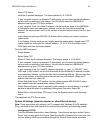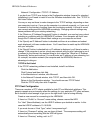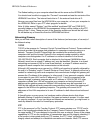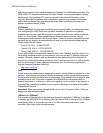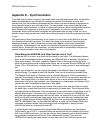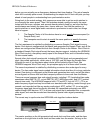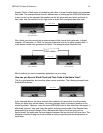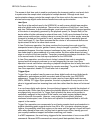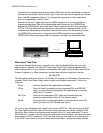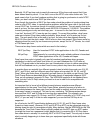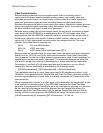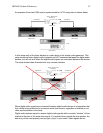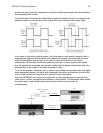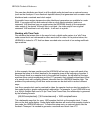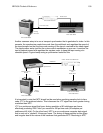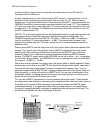
HD24/96 Technical Reference 94
requirement for sample clock synchronization. MIDI data can be transmitted as soon as
an external device tells it that it is time to go. If the time code source speeds up or slows
down, the MIDI sequencer follows it. As long as the sequencer is a time code slave,
there is no possibility for drift to occur.
Because of the way Trigger Sync works in MIDI sequencers, it is never possible to
properly synchronize a Jam Sync-based digital audio device like the HDR24/96 by
making the HDR24/96 the time code slave. This is because the clock that generates
MTC or LTC time code from the sequencer is derived from a hardware timer on the
computer that cannot be synchronized to an external source. The correct way to make
the HDR24/96 synchronize to a computer-based MIDI sequencer is to make the
HDR24/96 the time code master and the sequencer the slave, as illustrated below.
More about Time Code
Just as the Sample Clock runs at a specific rate called the Sample Rate, the time code
signal runs at a specific rate called the Time Code Frame Rate. Unlike a standard clock
which displays time in hours, minutes, and seconds, time code further divides a second into
frames. A display of a 30fps (frames per second) time code time might look like this:
02:18:57:28
This time code value reads 2 hours, 18 minutes, 57 seconds, and 28 frames. There are four
standard Time Code Frame Rates, each of which has a specific application. These four
rates are:
24 fps Used for theatrical film applications worldwide.
25 fps Used for music, broadcast and non-broadcast PAL and SECAM
video, and non-theatrical (broadcast) film applications in countries
which use 50 Hz power.
29.97 fps Used for non-broadcast NTSC video and theatrical film post
production applications in the US, Canada and Japan.
30 fps Used primarily for music applications in countries which use 60 Hz
power (primarily the US, Canada, and Japan).
All of this is very straightforward except for the case of 29.97 fps. Why do we have a 29.97
fps Time Code Frame Rate when all the other frame rates are nice whole numbers? Well,
long story. Back before color television was around in the U.S., black and white TV ran at
30 frames/sec. In order to get the extra color information into the picture, the frame rate was
slowed down to 29.97 frames/sec. 29.97 fps time code was invented to run in perfect sync
to the NTSC color video so that each video frame could have a unique time code address.
Time Code
Time Code Master
Sequencer
Time Code Slave



